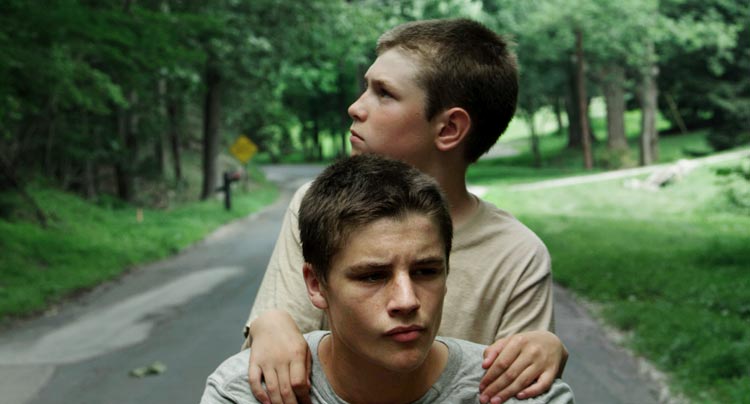
Remains too translucent and void of any real substance to prosper on mood and poetic storytelling alone.

Remains too translucent and void of any real substance to prosper on mood and poetic storytelling alone.
The title of the film serves as a grand forewarning for what unfolds in this atmospheric indie drama about adolescent siblings questioning their own mortality as they deal with tragedy. Daniel Patrick Carbone’s coming-of-age film features a highly allusive narrative that gives off the haunting impression that danger is right around the corner, reinforced by reoccurring visuals of lifeless animals and isolated surroundings, yet the ambiguity that creates the mysterious aura also makes the film feel emotionally detached. The awe-inspiring cinematography in Hide Your Smiling Faces seems heavily influenced from the works of Terrence Malick, demonstrating that even death in nature can be beautifully captured.
Opening with a lingering shot of a snake consuming a fish, followed by some boys playing with a dead bird, Hide Your Smiling Faces wastes no time with setting it’s menacing tone. The film centers on two young brothers Tommy (Ryan Jones) and Eric (Nathan Varnson) who are enjoying their summer by exploring the woods, wrestling around with friends, and discovering old abandoned houses. After successfully pulling off a scheme to score a free meal at a fast food joint (these youngsters aren’t old enough to have jobs), they soon discover a neighborhood friend dead underneath a bridge. This tragic situation puts an enormous damper on their summer and taxes their emotions.
Each brother copes with the situation differently. Eric is more physical and violent in his grieving process, handling his anguish by smashing mirrors and destroying furniture. Whereas Tommy takes a much more reserved approach by mostly keeping to himself. With zero paternal guidance in sight, the young boys must come to terms with the situation on their own, whether they have the emotional capacity or not.

The biggest problem with Hide Your Smiling Faces is the amount of redundancy found throughout. The film insists on continuously showing dead animals well after establishing the death in nature motif, making it feel a bit heavy-handed in the end. Just about everyone in the film takes a turn speaking about suicidal thoughts, which happens often enough to make it noticeable and slightly irritating. Also, there are multiple scenes of kids wrestling with each other, which feel less significant each time their shown.
Hide Your Smiling Faces may contain a razor thin plot, but it makes up for it in spades with the atmospheric visuals from Carbone and his DP Nick Bentgen. Surrounded by lush forest landscapes, the camera beautifully captures the mortality found in nature and how two adolescent boys deal with death in their own ways. The film has a sort of Malick gaze to it. Rather than concentrating on what the characters have to say, the camera nonchalantly follows its subjects around and studies the expressions on their faces.
Thankfully the film doesn’t turn into some kind of murder mystery by revealing the specifics about the mysterious death, because the important part isn’t how the death occurred, but rather the effect it has on these adolescent kids. Uncertainty is a major theme of the narrative, so those expecting concrete answers may be disappointed that the film doesn’t provide any. Hide Your Smiling Faces is surprisingly absorbing considering the majority of the time is spent just observing characters contemplate their own mortality. But the film remains too translucent and void of any real substance to prosper on mood and poetic storytelling alone. Even if Hide Your Smiling Faces is not a complete success, Carbone puts his name on the map for directors to pay attention to going forward.